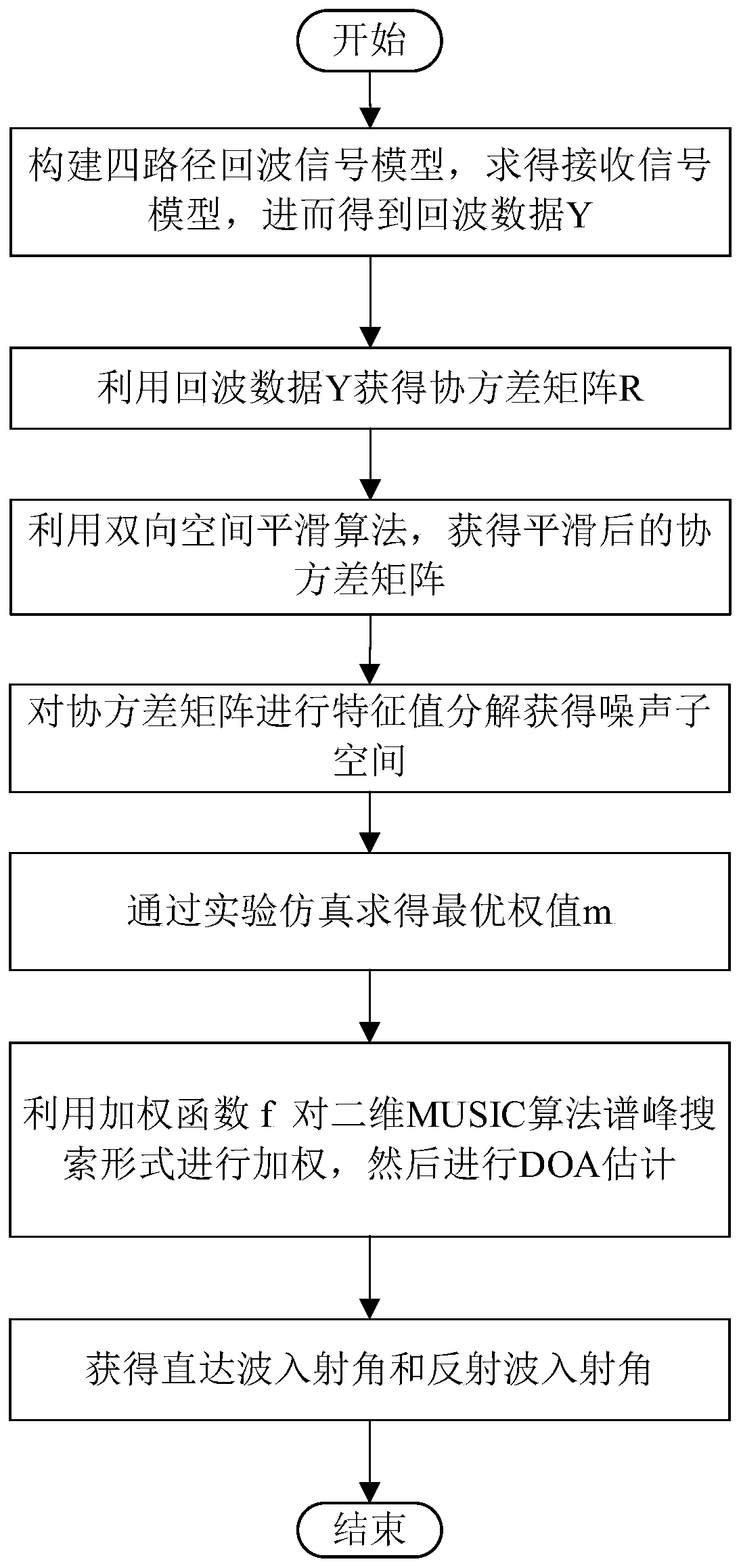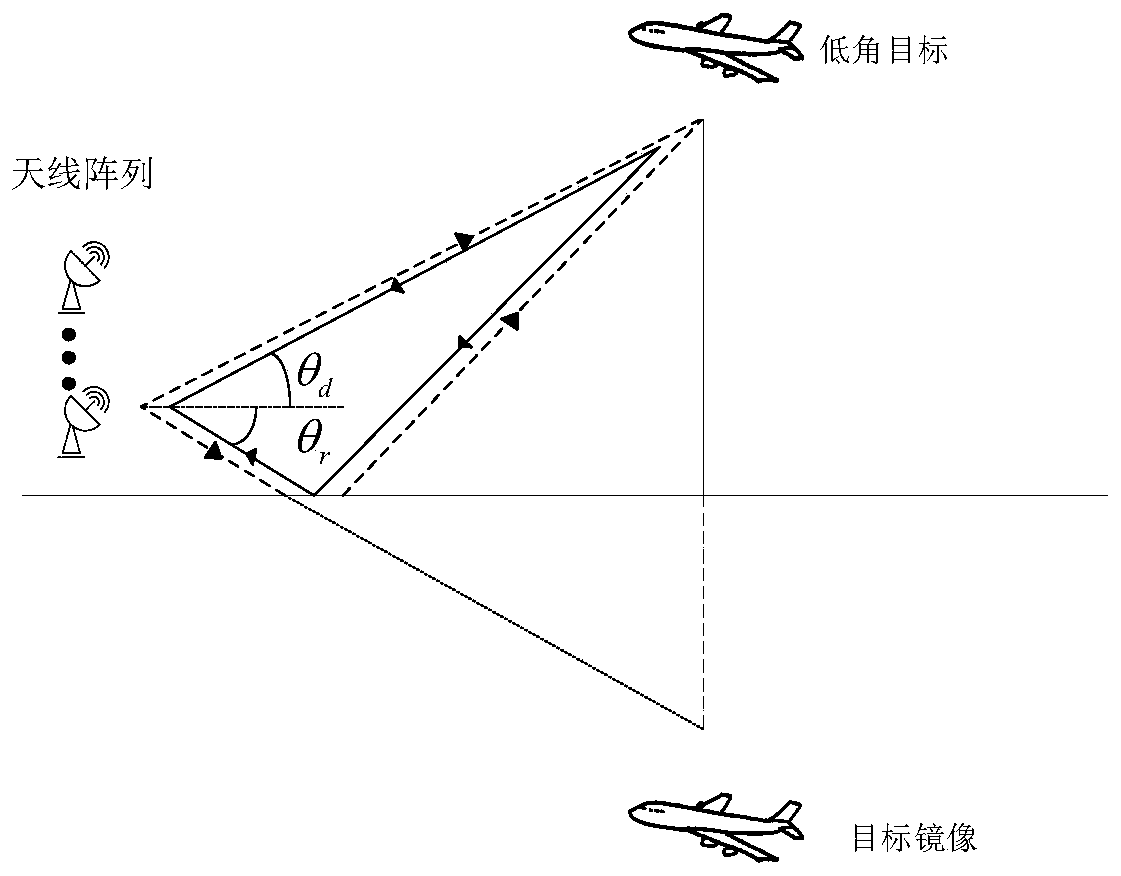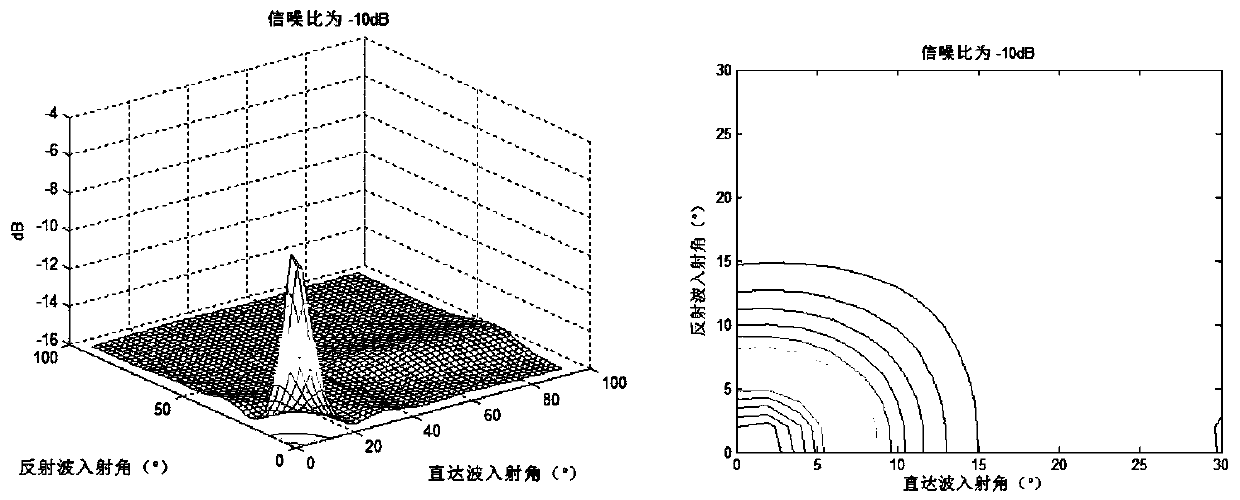MIMO radar DOA estimation method based on low-altitude multipath condition
A technology of DOA and radar, which is applied in the field of low-altitude elevation angle and high-precision direction-of-arrival estimation. It can solve the problems of estimation algorithm calculation performance degradation, performance impact, and radar accuracy. It achieves better results, small root mean square error, and improved The effect of accuracy
- Summary
- Abstract
- Description
- Claims
- Application Information
AI Technical Summary
Problems solved by technology
Method used
Image
Examples
Embodiment Construction
[0024] The present invention will be further described below in conjunction with the accompanying drawings and implementation steps.
[0025] The flow chart of DOA estimation method based on MIMO radar at low elevation angle is as follows: figure 1 shown, including the following steps:
[0026] Step 1: Set the experimental conditions as the number of sampling points is 100, the signal-to-noise ratio is 5dB, and the uniform linear array with the number of array elements is 6. Let the MIMO radar be composed of M isotropic array elements with an array element spacing of d. Sending and receiving co-located uniform linear array, assuming there is only one target, θ d and θ r are the incident angles of the direct wave and the incident angles of the reflected waves, respectively, and the transmitted signal matrix is:
[0027] S F (t)=[s F1 (t),s F2 (t),...,s FM (t)] T
[0028] In the above formula, s Fi (t), i=1,2,...,M. Indicates the transmitted signal of the i-th array el...
PUM
 Login to View More
Login to View More Abstract
Description
Claims
Application Information
 Login to View More
Login to View More - R&D
- Intellectual Property
- Life Sciences
- Materials
- Tech Scout
- Unparalleled Data Quality
- Higher Quality Content
- 60% Fewer Hallucinations
Browse by: Latest US Patents, China's latest patents, Technical Efficacy Thesaurus, Application Domain, Technology Topic, Popular Technical Reports.
© 2025 PatSnap. All rights reserved.Legal|Privacy policy|Modern Slavery Act Transparency Statement|Sitemap|About US| Contact US: help@patsnap.com



